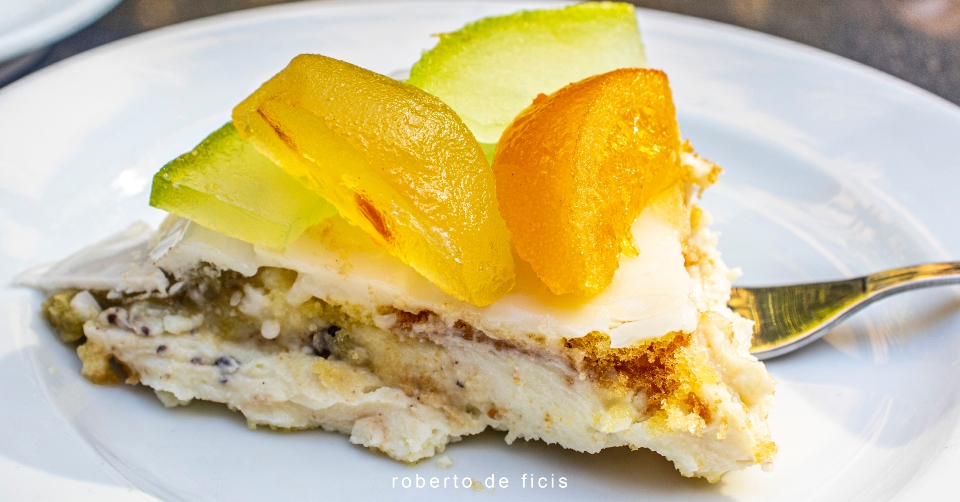The Cassata Siciliana (from the Arabic quas’at, “bacinella” or from the Latin caseum, “cheese”) is a traditional cake made with sweetened ricotta (traditionally sheep’s milk), sponge cake, royal paste and candied fruit.
It is a typical Sicilian production, as such it has been officially recognized and included in the list of traditional Italian food products (P.A.T.) of the Ministry of Agricultural, Food and Forestry Policies (Mipaaf), on the proposal of the Sicilian Region.
What are the different variations?
There are countless local variants that stand out for the typicality of the recipe: the Palermo variant, the Messina one (less sweet), the Catania, the Trapani, the Nissena and the Syracusan (which is distinguished by the layered presence of the sponge cake and the absence of icing).
Infatti soprattutto l’aspetto esteriore può variare da una scarna decorazione di glassa e un po’ di scorza d’arancia candita fino a una opulenta costruzione baroccheggiante con perline colorate e una mezza dozzina di frutti canditi diversi. Sempre secondo le varianti locali, ci possono essere ingredienti aggiuntivi, come pistacchio, pinoli, cioccolato, cannella, o acqua di zagara. C’è anche una versione monoporzione, la cassatina.
In fact, above all the external appearance can vary from a sparse decoration of icing and a little candied orange peel to an opulent baroque construction with colored beads and half a dozen different candied fruits. Also according to local variations, there may be additional ingredients, such as pistachio, pine nuts, chocolate, cinnamon, or orange blossom water. There is also a single-serving version, the cassatina.
The photo was taken by Roberto De Ficis in the Antico Caffè Spinnato in Palermo. Join Travelling in Italy (official group) to see more photos and to send yours.








Discussion about this post